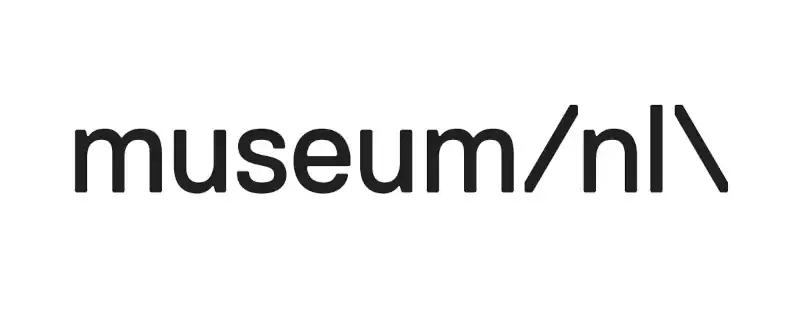Maximizing Your Loyalty Program Benefits: Tips for Getting the Most Value
Choosing the Right Loyalty Programme: How to Select the Best Fit for Your Needs
Selecting the right loyalty program is essential for maximizing the benefits on offer. The first step is to identify your shopping habits and preferences. Consider which brands or retailers you frequently visit and evaluate the rewards they provide. When evaluating options, take time to research the best retail loyalty programs and compare the offerings from different retail brands, as these programs often stand out for their exclusive benefits, recognitions, and ability to drive customer engagement. Look for programs that align with your spending patterns and offer rewards that genuinely interest you, whether it’s discounts, exclusive products, or experiential perks. It’s also important to assess how the programme’s structure determines how easily points can be earned and redeemed, and whether the rewards justify any membership fees. Additionally, research any limitations or expiration dates on rewards, as these can affect your ability to benefit fully from the program. Reading reviews or seeking recommendations can provide insights into the programme’s other value based loyalty programs and customer satisfaction. By carefully choosing a program that fits your needs and lifestyle, you can ensure that your loyalty efforts are rewarded, enhancing your overall shopping experience.
Tracking Your Points and Rewards: Tips for Staying on Top of Your Loyalty Program Benefits
Effectively tracking points and rewards is essential for maximizing the advantages of any membership scheme. Start by exploring the online portal or app connected to your member loyalty initiative, which usually provides real-time updates on rewards points, worthwhile benefits, and your current balance. Regular monitoring helps avoid expired rewards and ensures customers use points on time in loyalty and rewards programs . Setting alerts for expiration dates or bonus point opportunities allows you to plan redemptions for access to new products strategically and increase overall long-term value.
Many incentive programs send notifications about special promotions, private events, or bonus points, which can significantly increase engagement and encourage return visits. Membership programs and multi-level membership programs often highlight tier levels where customers earn points faster or access special pricing and priority access, making the experience more appealing to the target audience. Subscription loyalty models may even provide premium features such as birthday reward perks or premium experiences, especially in sectors like the beauty industry. By keeping a record of transactions and monitoring patterns, customers can optimize their spending to maximize benefits when compared to other loyalty programs . Staying informed and proactive with loyalty strategies ensures that membership schemes consistently recognise members, enhance shopper loyalty, and strengthen brand loyalty.
Utilizing Member-Only Offers: How to Make the Most of Exclusive Deals and Discounts
Member-only offers are a key advantage of the best member loyalty schemes and incentive programs, providing special pricing and worthwhile benefits that enhance the shopping experience. To benefit fully from the reward program, customers should watch newsletters, emails, or app notifications that announce special promotions, bonus points opportunities, or private events. Planning purchases around these loyalty strategies allows members to maximize savings, earn points, and access exclusive sales, early access to sales, and premium experiences such as invitation-only events or early product launches.
Membership programs and multi-level membership programs often include tier levels where incentivized participants enjoy progressively better perks, including birthday reward benefits, private shopping nights, or limited-edition products. Subscription loyalty models may extend these benefits further with premium services or beauty industry partnerships that appeal to a specific target audience. It’s also important to check the terms of these offers, such as minimum spend requirements or eligible product categories, to ensure maximum value. By timing purchases with special promotions and making use of priority access to the rewards program , customers increase member retention benefits for the brand while maximizing personal savings. Ultimately, member-only offers highlight how store loyalty initiatives and value based loyalty programs recognise members with meaningful perks, creating ongoing purchases and long-term brand loyalty.
The Future of Loyalty Programmes
Digital and Mobile Innovations
Digital and mobile innovations are transforming membership schemes, making member loyalty schemes and store loyalty initiatives more dynamic, accessible, and worthwhile for consumers. Mobile apps now serve as the central hub for incentive programs, allowing members to track rewards points, earn points automatically, use points for worthwhile benefits, and access bonus points from special promotions or private events. Customers can also use these platforms to manage birthday reward perks, claim exclusive access and special pricing, or enjoy premium experiences such as early product launches and premium services.
Many membership programs and multi-level membership programs include tier levels displayed directly in the app, motivating incentivized participants with progressively more benefits that encourage ongoing purchases and stronger member retention. Subscription loyalty models further integrate with digital payment systems and credit cards, offering meaningful perks and higher average order value. Advanced technologies such as artificial intelligence and machine learning allow businesses to deliver tailored offers, aligning with a marketing strategy designed for the right target audience. In the beauty industry, for example, brands use mobile apps to combine gamification, priority access, and value based loyalty programs, strengthening emotional connections and brand loyalty.
As innovations like augmented reality, digital wallets, and blockchain expand, they provide more secure and flexible ways for customers to earn rewards, cash in points, and transfer benefits. These digital strategies ensure membership schemes remain relevant, offering unique opportunities and loyalty strategies that maximize long-term value while making engagement more interactive and rewarding.
Personalized Shopping Experiences
Personalized shopping experiences are becoming a cornerstone of modern membership schemes, helping retailers strengthen brand loyalty and deliver worthwhile benefits that align with customer preferences. By using customer data and advanced analytics, businesses can design member loyalty initiatives that go beyond standard discounts, offering bonus points, premium experiences, and product recommendations that fit individual needs. This approach often includes curated shopping homepages, tailored offers based on past purchases, and reminders to use points for rewards points or how many points can be redeemed f birthday reward perks.
Membership programs, multi-level membership programs, and value based loyalty programs are increasingly shaped by artificial intelligence and machine learning, which adjust loyalty strategies in real time. These innovations create tier levels that recognise members with priority access to unique products, loyalty card benefi experiential benefits, or invitations to private events. In the beauty industry, for example, retailers use personalized recommendations to enhance the shopping journey and provide exclusive experiences that capture the attention of their target audience.
This bespoke model of incentive programs encourages return visits, increases customer spend, and strengthens member retention by ensuring every interaction feels relevant. As consumer intelligence research partners note, subscription loyalty models and store loyalty initiatives continue to evolve, personalizing customer loyalty experiences that will define how loyalty strategies maximize long-term value.
Sustainable and Ethical Rewards
As consumers place more emphasis on sustainability and ethical practices, loyalty programs are adapting to reflect these priorities. Future customer loyalty programs and retail loyalty programs are expected to integrate sustainable rewards that resonate with a socially conscious target audience. This shift in loyalty strategy can include valuable rewards from retail brands, such as eco-friendly products, donations to charitable causes, or contributions to carbon offset initiatives. Some rewards programs may allow members to redeem points for community projects, aligning purchases with customer values and encouraging repeat business.
Membership programs, tiered loyalty programs, and value based loyalty programs are especially well suited for ethical initiatives, as loyalty tiers can highlight exclusive events, unique experiences, or partnerships with eco-conscious brands. Paid loyalty programs may expand benefits by offering birthday reward perks, exclusive discounts on sustainable products, or exclusive experiences that reward customers, just as other loyalty programs may do, who prioritize responsible choices. In industries such as the beauty industry, sustainable packaging and ethical sourcing are increasingly part of loyalty strategies, building deeper brand loyalty and long-term customer retention.
By integrating these elements into loyalty programs, brands demonstrate a commitment to social and environmental impact while strengthening emotional connections. Sustainable rewards, along with early access to sales, not only foster customer engagement and future purchases but also prove how loyalty programs deliver meaningful, valuable rewards that align with consumer values. As demand grows, these strategies will play a vital role in defining the best customer loyalty programs of the future.
Common Misconceptions About Loyalty
Are They Really Free?
A common misconception about membership schemes is that they are always free for consumers. While the best loyalty programs do not require payment to join, they often include indirect costs. Customers are encouraged to spend more in order to earn points, unlock tier levels, or achieve higher membership program status, which can lead to greater overall expenditure. Some incentive programs also include membership fees or require minimum spending levels to access exclusive discounts, special pricing, bonus points, or worthwhile benefits.
Subscription loyalty models are a clear example, asking customers to pay an annual fee in exchange for premium experiences such as free shipping, expedited delivery, or access to private events. Participation in incentive programs may also involve sharing personal data, which brands use to refine their marketing strategy, target audience more precisely, and create personalized offers. In sectors like the beauty industry, these insights can shape value based loyalty programs that align rewards with consumer values.
It is essential for shoppers to evaluate whether the structure of a loyalty initiative truly provides worthwhile benefits that justify the costs. By understanding the trade-offs, customers can make informed choices about which schemes deliver genuine benefits, encourage return visits without overspending, and foster long-term brand loyalty.
Do They Invade Your Privacy?
Concerns about privacy are common when it comes to membership schemes and incentive programs, since these systems collect data on customer preferences, shopping habits, and sometimes personal details. While the goal is often to deliver worthwhile benefits, bonus points, and personalized offers that strengthen customer loyalty, the collection of data raises valid questions about security. Customers may worry about who has access to their information, how long it is stored, or whether it could be shared with third parties.
Reputable member loyalty initiatives and store loyalty initiatives usually follow strict privacy regulations and outline data practices in their policies. By reviewing these guidelines, customers can understand how their information supports marketing strategy, tier levels, and targeted rewards that benefit the right target audience. Value based loyalty programs in industries such as the beauty industry often highlight transparency as part of their appeal, showing members how their data helps create private events, premium experiences, and different types of loyalty strategies.
For consumers, the key is balancing privacy concerns with the benefits of participating in membership programs, multi-level membership programs, or subscription loyalty models. Opting for brands that offer clear policies, customer control, and secure platforms ensures that membership schemes still recognise members with priority access and worthwhile benefits without compromising personal privacy.
Is Loyalty Worth It?
Determining whether membership schemes are worth the commitment depends on shopping habits, frequency, and lifestyle preferences. For frequent shoppers, member loyalty initiatives and store loyalty initiatives can deliver worthwhile benefits, special pricing, and bonus points that increase customer satisfaction and strengthen brand loyalty. The true value, however, depends on how effectively incentive programs are used and whether the benefits align with individual needs.
When evaluating a loyalty scheme example, customers should consider whether rewards points and perks justify the required spending levels, how easily they can earn points, and whether use points options provide meaningful value. Membership programs, loyalty and rewards programs multi-level membership programs with clear tier levels, and subscription loyalty models may add costs such as annual fees, but they often provide priority access, private events, birthday reward perks, or premium experiences that enhance member retention. Value based loyalty programs and loyalty strategies targeting the right audience—such as beauty industry programs focused on ethical or sustainable benefits—can deliver unique advantages.
It’s also essential to assess the scheme’s effect on customer spend, return visits, and higher average order value. For some shoppers, the personalisation, worthwhile benefits, and convenience of membership programs make them worthwhile. For others, overspending or underused benefits may reduce their appeal. Ultimately, determining the value of membership schemes requires weighing personal shopping patterns, relevant rewards, and potential drawbacks to ensure the scheme supports long-term value and long-term brand loyalty.
Measuring the Success of Your Loyalty Programme
Measuring the success of a loyalty program is essential for understanding how effectively it builds brand loyalty, encourages repeat business, and maximizes customer lifetime value. A successful customer loyalty program goes beyond simply offering discounts—it rewards customers with valuable rewards, bonus points, exclusive access, or birthday reward perks that improve customer retention and engagement. By delivering meaningful rewards programs, businesses can nurture a loyal customer base that returns consistently and generates higher average order value.
Regular evaluation is key. Tracking metrics such as how customers earn points, redeem points, or progress through loyalty tiers in tiered loyalty programs and membership programs highlights what drives customer satisfaction. Paid loyalty programs and value based loyalty programs can be assessed on whether they deliver exclusive experiences, exclusive events, or beauty industry partnerships that resonate with the right target audience. Reviewing these results allows businesses to refine their marketing strategy, adjust loyalty strategies, and ensure programs continue to deliver long-term value.
Ultimately, measuring performance ensures loyalty programs remain effective, reward customers meaningfully, and provide insights that lead to stronger customer retention, future purchases, and sustained revenue growth.
Key Metrics to Track Loyalty Programme Performance
To truly understand the impact of your loyalty program, it’s important to monitor a set of key performance indicators. These metrics provide valuable insights into customer behavior and the overall effectiveness of your rewards program:
Customer retention rate: This measures the percentage of customers who remain active in your loyalty program over time. A high retention rate indicates that your program is successfully keeping customers engaged and coming back for repeat business.
Redemption rate: This tracks how many customers are actually redeeming their rewards or points. A strong redemption rate suggests that your rewards are appealing and accessible, which is crucial for maintaining customer interest.
Customer lifetime value (CLV): CLV calculates the total value a customer brings to your business throughout their relationship with your brand. A successful loyalty program should help increase this figure by encouraging more frequent and higher-value purchases.
Average order value (AOV): Monitoring the average amount spent per transaction can reveal whether your loyalty program is motivating customers to spend more each time they shop.
Loyalty program sign-ups: The number of new members joining your loyalty program is a clear indicator of its appeal and the effectiveness of your marketing efforts.
Customer engagement: This encompasses all the ways customers interact with your brand, from opening emails and visiting your website to participating in social media campaigns. High engagement levels often correlate with greater loyalty and higher lifetime value.
By keeping a close eye on these metrics, businesses can ensure their loyalty program is on track to deliver meaningful results and adapt their strategy as needed.
Understanding Customer Engagement and Retention Rates
Customer engagement and retention rates are at the heart of any proven loyalty initiative. High engagement means that customers are actively participating—earning points, using rewards, and interacting with your brand across multiple channels. This level of involvement is often driven by offering worthwhile benefits, special pricing, and unique opportunities that make members feel appreciated.
Retention rates, meanwhile, reflect how well your membership scheme is keeping customers over the long term. Strategies like introducing tier levels with increasingly premium benefits, providing early access to sales, and recognising your most loyal customers with special perks can significantly boost retention. For example, higher tier members might enjoy priority support, access to new products, or invitations to private events—benefits that not only recognise loyalty but also deepen the emotional connection between customer and brand.
By focusing on customer engagement and retention, businesses can create a membership scheme that not only attracts new members but also turns them into lifelong advocates, driving ongoing purchases and increasing long-term value.
Using Feedback to Improve Your Loyalty Experience
Listening to customers is essential for building a successful loyalty program that stands apart from other customer loyalty programs and retail loyalty programs. Collecting feedback through surveys, social media, and customer reviews helps businesses understand what the target audience values most and how rewards programs can be improved. If members find it difficult to redeem points or navigate rewards points, simplifying the process can boost satisfaction and encourage repeat business.
Feedback often highlights opportunities to introduce a rewards program that features valuable rewards such as bonus points, birthday reward perks, exclusive discounts, or invitations to exclusive events. In sectors like the beauty industry, early access to new product launches or exclusive experiences can significantly increase engagement. Membership programs, tiered loyalty programs with loyalty tiers, and the best customer loyalty programs can all be refined using this input, ensuring that loyalty strategies align with customer values and drive customer retention. Value based loyalty programs in particular benefit from tailoring perks to reflect customer expectations.
By acting on member suggestions, companies create loyalty strategies that reward customers more effectively and strengthen brand loyalty. Incorporating feedback into a marketing strategy ensures programs maximize customer lifetime value, increase customer spend, and deliver sustainable business growth. Ultimately, listening to customers transforms loyalty programs into powerful tools for engagement, retention, and long-term success.
























